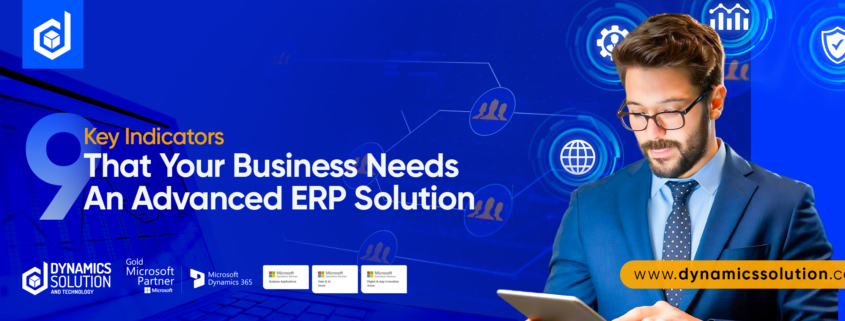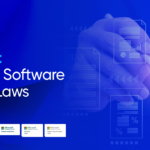Change is inevitable, and adapting to this change is pivotal to grow and sustain in the shifting dynamics and landscape. This applies especially to business. The change can be in terms of the technology they use, the market trends, and regulatory compliances. Imagine you are a thriving business, but your tables have piles of papers and documents that you need to enter in your Excel sheet, bank statements that need reconciliation, or your Information Technology faces a sudden shutdown because your system is down as it is outdated.
These are not all the issues or not all the businesses face these kinds of issues. The key takeaway from this statement is that the complexities in business are far beyond imagination yet can be eradicated with better planning and course of action. Optimizing your resources, aligning your work order, and managing your accounts and systems that comply with regulations and similar actions are what need to be checked on your list. This is not an easy set of tasks to carry but it is not impossible.
What is the solution?
Enterprise Resource Planning (ERP) systems are key to defining future discourse for your business and managing it with an end-to-end managed solution. It provides a suite of business applications and tools to transform your operations. According to Forbes, the global ERP market is forecasted to expand from 49.8 billion USD to 140 billion USD from 2023 to 2030, at a Compound Annual Growth Rate (CAGR) of 15.9% during the forecast period.
This blog delves into the challenges that your business might be facing and presents some diagnostic parameters that will inform you that you need to shift the way your business operates. Let us explore more about it.
Diagnostic Parameters Indicating the Need for ERP Solution
Realizing the earliest symptoms of a deteriorating system is better than realizing at the end when everything turns into chaos. It applies to all kinds of organizations irrespective of the size, market position, or industry you are working in. We are here to help you with it. Some indicators will tell that your existing system is unsuitable and an ideal choice for your business, and you need an upgrade. Enlisted below are some of those indicators. If they start appearing and you check more than half of the list, that is your sign to shift to an advanced ERP solution before it is too late.
Inefficient Business Processes
If your business is not performing well, this can be due to inefficient communication, collaborations, or other issues due to outdated systems which lead to lack of productivity, targets being met, and other redundancies. It will lead you to financial loss, affecting your reputation and other stakes. A consolidated and integrated system overcomes the bottlenecks and unifies all operations, information, and communication through a unified system, ensuring efficiency and seamless completion of goals and operations.
Manual Data Entry
It is one of the biggest issues that exist in business even today. When the data market is flourishing and pacing so fast, relying on manual functions can result in lot of errors, mistakes, and wasted time and operations. Harnessing automation can solve all these issues in the blink of an eye. While the data is entered automatically, there would be fewer errors and data duplication, or no extra effort would be required from you. The time saved from this hustle can be utilized by employees on something more valuable and strategic for business growth.
System Complexities as You Grow
Business management suites and tools are efficient and helpful in handling your business operations, but they give you a tough time as your business starts growing. The requirements increase, and it must handle more data and provide service to an extended level. It is where they fail as they cannot scale the operations to the increased level. The best thing an ERP does for you is that it is scalable, and it adapts to the increasing size and requirements of your business.
Lack of Visibility
You do not have access to all the data and analytics across your system which forbids you to evaluate the key metrics, which ultimately results in uninformed decisions and inaccurate sales forecast, which also affects the fiscal performance as you cannot access real-time data and insights. Enterprise Resource Planning gathers all the data from across the system and unifies it into a single platform to improve visibility and provide a 360-degree view of your performance and metrics leading to strategic and improved decisions and future.
Issues in Managing Inventory
This issue is linked to the issue of visibility. Without proper tracking or with inaccurate insight into inventory you will either end up being out of stock or being overstocked. In the first case it will lead to inability to fulfil the order on time while in the second case it will result in the waste of resources that can give you financial setbacks. Inefficient inventory management can lead to missed sales and customer dissatisfaction and disappointment. A sophisticated system keeps you up to date with the condition of your inventory informing if you need to produce more stock, what is the capacity, and forecast the demand while analyzing the past data, ensuring you fulfil your orders and satisfy your customer.
Difficulty in Managing Accounts and Finance
Accounts department operations are complex and hectic in monthly reconciliation and financial reporting. Manual handling leads to errors and compliance issues that require more effort in settling. Even financial analysis and planning becomes a nightmare for accounts departments. ERP system enables faster reconciliation, financial reporting, and analysis with end-to-end management system helping you to take control over financial decision making for future.
Multiple Software for Different Operation
Imagine managing your business with several software. For every process and department, there is a separate software. Which means you must keep up and maintain with several software and cherry on top, they do not integrate. The data must be manually integrated and unified, which requires much effort and extra work. ERP provides you with a suite of solutions that handle all your operations with a single system, saving you a lot of effort and money.
Data Silos
When your data is scattered across the system and cannot be accessed easily, you require a set of protocols and correspondence with relevant departments to get that data, it adds to the complexities in operations. It causes lack of effective communication and collaboration leading to inconsistencies in data and invisibility of the business processes. A central and unified database can lead to an agile business environment providing data accuracy, collaboration, and seamless operations.
Complex IT Management
If you are using multiple software for your operation or your system is outdated, IT management becomes more complex and time-consuming. It will also require frequent maintenance and might cause unexpected disruptions leading to a halt to your operations, budget constraints, and ineffective IT system. ERP solution reduces the cost and burden of your IT department allowing your business to grow and innovate instead of struggling with an outdated system.
Digitalize Your Business Landscape with Dynamics Solution and Technology
Advanced Enterprise Resource Planning software can help you deal with the complexities and hindrances in your business growth with an effective and state-of-the-art solution. Microsoft Dynamics 365 is one of the sophisticated and comprehensive business suites that unifies all your workflow and leverage your system with innovation and automation which can be deployed on-premises as well as on the cloud.
Dynamics Solution and Technology is a Gold and Solution Partner of Microsoft which has a team of experts and 100+ man years of experience with business innovation and digital transformation and can help you get rid of the hindrances in your growth with Dynamics 365 ERP.
Contact us to step into the digitalized realm to drive agility and success for your business.







